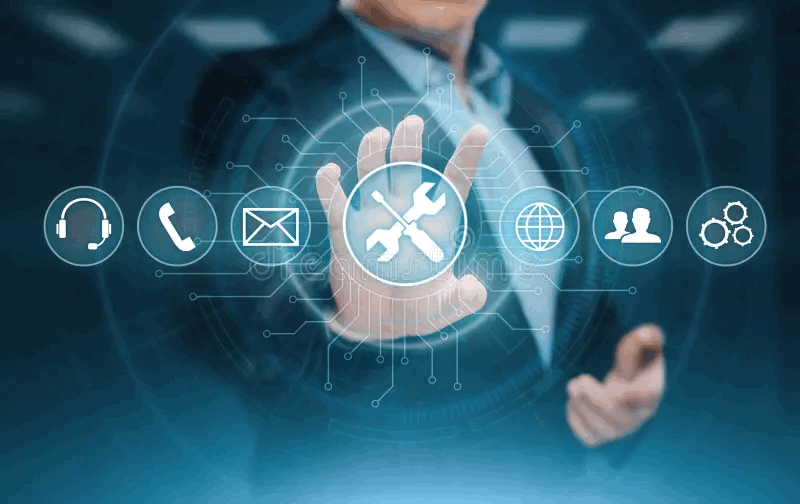
How to choose the right customer support channel
Effective customer service hinges on choosing the right channels based on team skills, customer preferences, and industry trends, integrating them with efficient software for optimal communication and management.
To-be-or-not-to-be of business
Customer service is highly important in today’s changing world. Customers need answers, and definitely, you must provide them. However, what changes is how you communicate with your customers. It can be done in two ways: via conventional channels or innovative ones. But which one is better?
You should take into consideration three factors while making that decision:
-
Your team (their capacity, skills, and interests).
-
Your customers (their capacity, skills, and interests).
-
Your industry (trends and norms you need to be aware of).
It’s better for your customers, your team, and your business to focus on a few support channels than to spread yourself thin and provide an inconsistent service across all of them. Customer service will be faster and more efficient if your employees focus on carefully selected channels and master them.
In these days of digitalisation, software solutions can support almost every process. Whichever channel you choose should correspond with your software and other systems; in short, your systems should be integrated.
The most popular support channels
The range of options is changing constantly, and you should keep up with the pace of the continually evolving world of technology. Here are several popular support channels:
Email – the most widely used and well-established support channel. Emails are conversational and easy to process and manage. A consultant can return to the conversation anytime and check the previous arrangements. Unfortunately, emails might be frustrating when an issue requires a lot of back-and-forths.
Phone support – the most popular with older generations. It allows for real-time, direct, personal conversation. Sometimes, it might be one of the fastest ways of getting crucial information. But phone support is time-consuming and costly.
Live chat – This is in-between emails and phone support. The back-and-forth is less problematic, and an experienced consultant can solve many issues in real time. One of the downsides is that the expected response time is higher than email, so it can require more people in a team.
Social media – a brand platform and a support channel. It might be similar to live chat, but it is also visible to other users. Mostly facilitates conversation around products and services. In a public space, people typically expect an immediate response.
Knowledgebase – is an excellent way to scale your customer service department efficiently by enabling customers to help themselves. It needs an initial investment but allows you to save a lot of time and money at the end.
Chatbot – is a tool programmed to answer the most common questions asked by customers. If well programmed, it is a powerful combination of a live chat and knowledge base but does not require much attention from your employees. When a Chatbot has no particular answer programmed, it can redirect customers to other support channels. Like the knowledge base, it needs an initial investment but saves time and reduces employee workflow.
Employee, customer, industry
As it was mentioned before, to make the right decision, you should take into consideration 3 factors:
-
Understand your team You must know who you are working with because not every service agent or consultant suits every support channel. For example, some might have exceptional written skills but find phone calls stressful. Of course, you can train them and develop their skills, but you should audit their current skills and preferences before doing that. Answer questions like: how busy are they? What interests have they expressed regarding different types of support? What channels of communication do they prefer? What tools and systems do they use? Firstly, identify channels where multiple team members already have experience. Try to increase overall performance through training, integrating systems to improve the workflow or acquiring new software to work more efficiently. Then, offer these channels to customers on a trial basis and review their reactions.
-
Know your customers There is a lot you should know about your customers. Where do they spend time online? Which channels do they want to use to talk to you? How old is your customer base? What types of questions do they have? What have your competitors got to offer? What preferences do your customers have? If you have help desk software, you can probably run a report and answer these questions. If not, you should research to improve your efficiency and performance. You should know how your customers want to contact you, not how they do it now.
-
Keep an eye on the industry Apart from paying attention to your customers’ needs and wants, your staff preferences and skills, you should also consider the current situation in the industry and broader business changes. The whole customer service landscape is continuously changing. Customers use innovative channels such as social media or chatbots to find answers. Knowing the industry will allow you to make conscious choices when it comes to your support channels.
It is highly important to give your customers the possibility to contact you in case of any doubts, questions or feedback. It is crucial to choose the most suitable communication channel, but equally important is the software solution that will give you the ability to process and manage the whole communication, problem-solve and quickly find the answers. To work the most efficiently, you should be equipped with a powerful software solution or have your systems perfectly integrated.

Contact us.
If you need a partner in software development, we're here to help you.
We will respond to your enquiry immediately.